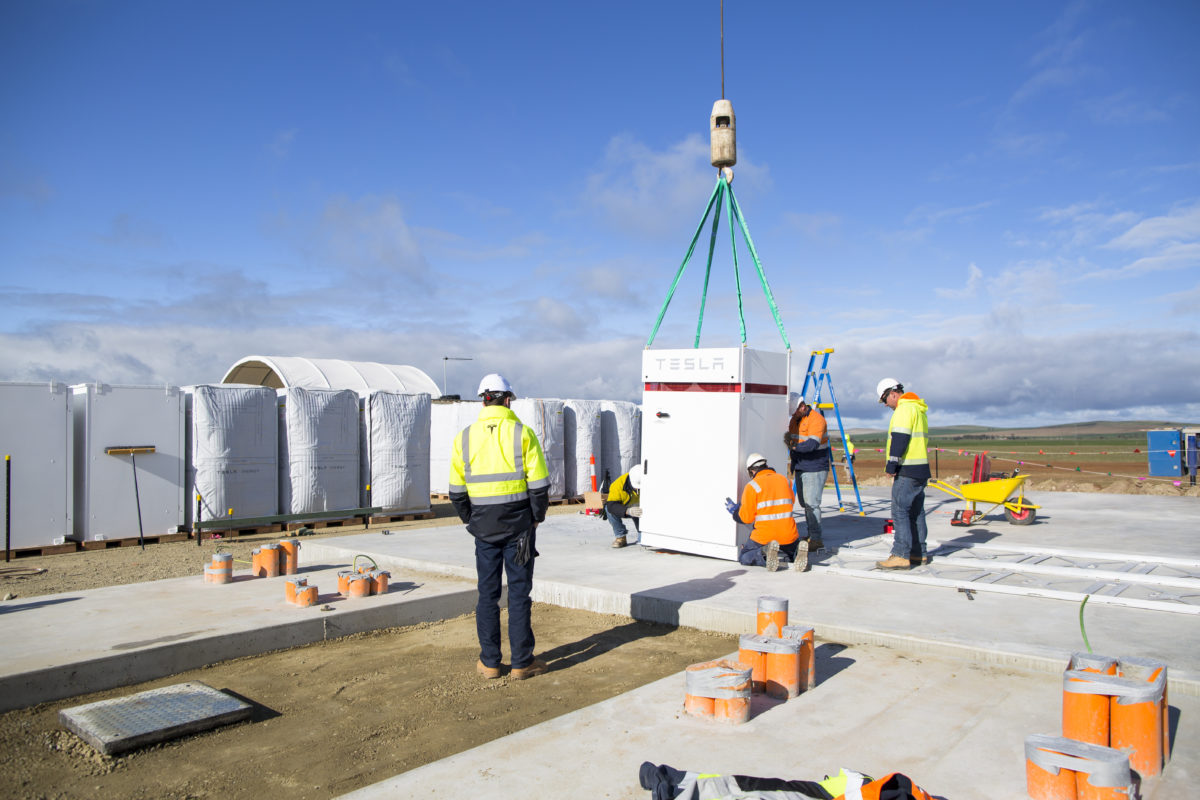“Battery storage is proving to be a versatile solution to network challenges,” said Western Australian Energy Minister, Bill Johnston on Friday, in an announcement that the McGowan Government is exploring the opportunity to build a 100 MW/200 MWh battery on the site of the decommissioned Kwinana power plant.
The announcement marked the launch of the Request for Information process for private enterprise to build the battery which, if it proves feasible, will also receive at least $15 million of Commonwealth Government funding.
Johnston is said to be in discussion with the Morrison Government regarding further funding of the project, which is expected to generate a job for every megawatt installed (100) during construction of what is effectively a giant sponge for daytime solar generation in the South West Interconnected System (SWIS).
With 50% of WA households expected to have solar PV on their roofs by 2030, and the challenges this poses to the grid when solar generation is high and demand for energy in the system is low, the McGowan Government last year devised a Distributed Energy Resources Roadmap to trial and implement innovative strategies that will turn a potential crisis of system instability into high-value solutions that benefit all of the state’s energy consumers.
“This big battery will complement Western Power’s roll out of community batteries, which are providing additional support and improved power quality to local homes and businesses,” said Johnston on Friday.
He was referring to the ongoing trial of more than a dozen 0.5 MW batteries deployed at a community level in the state, that allow residents to store excess daytime solar generation in a shared battery and reclaim that electricity for use in the late afternoons and evenings when energy tariffs are typically high.
The proposed big battery — WA’s largest, and at this stage Australia’s second largest after South Australia’s now 150 MW Hornsdale Power Reserve — will be managed by Synergy, Western Australia’s state-owned energy generator and retailer, and is intended to support the integration of more renewable energy into the grid, smooth fluctuations in demand and renewable-energy supply and substantially contribute to grid security.
In the transition to a renewable-fed electricity system, it will also “reduce wear and tear on existing generation plants that are not designed to fluctuate in response to high levels of renewable energy in the grid,” the joint statement by Premier Mark McGowan and Johnston said.
A synergy of solutions
Synergy CEO, Jason Waters, said batteries are one of a suite of technologies the business is investigating that will pave the way for a more intelligent energy future.
“We are moving away from the traditional centralised generation and network model,” he said, “to a future that increasingly incorporates distributed energy resources, including battery storage deployed at all levels in the electricity supply chain.
The Kwinana battery also forms part of the WA Government’s broader Energy Transformation Strategy, which incorporates not only the DER work stream, but whole-of-system planning and the development of foundational regulatory frameworks that will improve access to the SWIS for renewable energy resources and supporting technologies.
“It’s important we support the rapid electricity transformation that’s happening right now, and energy storage systems like this big battery have a crucial role to play in providing better energy and job outcomes for the WA community,” said McGowan.
Match fit? It’s line ball
His government has recognised that orderly rollout and integration of new grid-supporting technologies is critical to avoiding AEMO-forecast blackout events that could occur as early as 2022 if measures aren’t taken to manage the growing rooftop solar resource.
The battery will occupy an area the size of 20 tennis courts on the Kwinana site, and will store enough energy to power 160,000 homes for two hours.
If found to be feasible, the battery-development contract could be awarded by May 2021, and the storage facility is then expected to come online by September 2022.
This content is protected by copyright and may not be reused. If you want to cooperate with us and would like to reuse some of our content, please contact: editors@pv-magazine.com.









3 comments
By submitting this form you agree to pv magazine using your data for the purposes of publishing your comment.
Your personal data will only be disclosed or otherwise transmitted to third parties for the purposes of spam filtering or if this is necessary for technical maintenance of the website. Any other transfer to third parties will not take place unless this is justified on the basis of applicable data protection regulations or if pv magazine is legally obliged to do so.
You may revoke this consent at any time with effect for the future, in which case your personal data will be deleted immediately. Otherwise, your data will be deleted if pv magazine has processed your request or the purpose of data storage is fulfilled.
Further information on data privacy can be found in our Data Protection Policy.